SCEC TPV104
In this example, we illustrate how to implement rate-state friction law using a slip law with strong rate weakening (RS-SL-SRW) and setup parameters in SeisSol.
TPV104 has a planar rectangular vertical strike-slip fault with the main rupture region of velocity-weakening friction, a zone on the fault surface with transitional friction surrounds the main fault rupture region, and the outer regions on the fault surface have velocity-strengthening friction (Figure [fig:tpv104]).
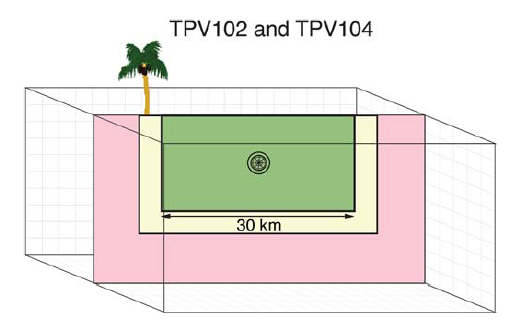
Diagram of TPV104. The vertical planar fault that has velocity-weakening friction region (green), which is surrounded by velocity-strengthening region (pink). It encounters a finite width transitional region (yellow) where the friction smoothly changes from velocity weakening (green) on the inside to velocity strengthening (red) on the outside.
Geometry
TPV104 uses the same vertical fault as TPV5. We use the mesh file of TPV5 directly.
RSL parameters
TPV104 uses rate-state friction where shear stress follows:
The friction coefficient is a function of slip rate \(V\) and state \(\psi\):
The state variable evolves according to the equation:
\(f_{ss}(V)\) is the stead state friction coefficient that depends on \(V\) and the friction parameters \(f_0, V_0, a, b, f_w and V_w\).
with a low-velocity steady state friction coefficient:
In SeisSol input file, Rate-state friction law can be used by choosing FL=103 in parameter.par. The friction parameters of RS-SL-SRW are shown in Table [table:tpv104rsl].
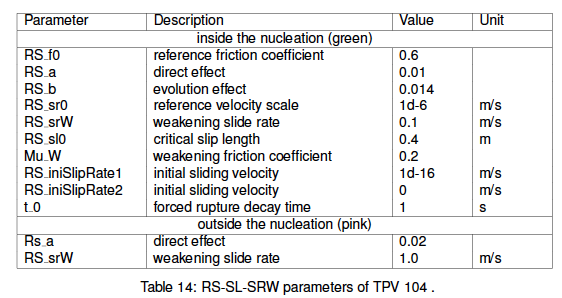
Table of rate-state friction used in tpv104.
To stop the rupture, the friction law changes from velocity-weakening in the rectangular interior region of the fault to velocity-strengthening sufficiently far outside this region. The transition occurs smoothly within a transition layer of width w = 3 km. Outside the transition layer, the fault is made velocity-strengthening by increasing \(a\) by \(\triangle a= 0.01\) and \(V_w\) by \(\triangle V_{w0} = 0.9\) .
The input files of TPV104 can be found at https://github.com/SeisSol/Examples/tree/master/tpv104.
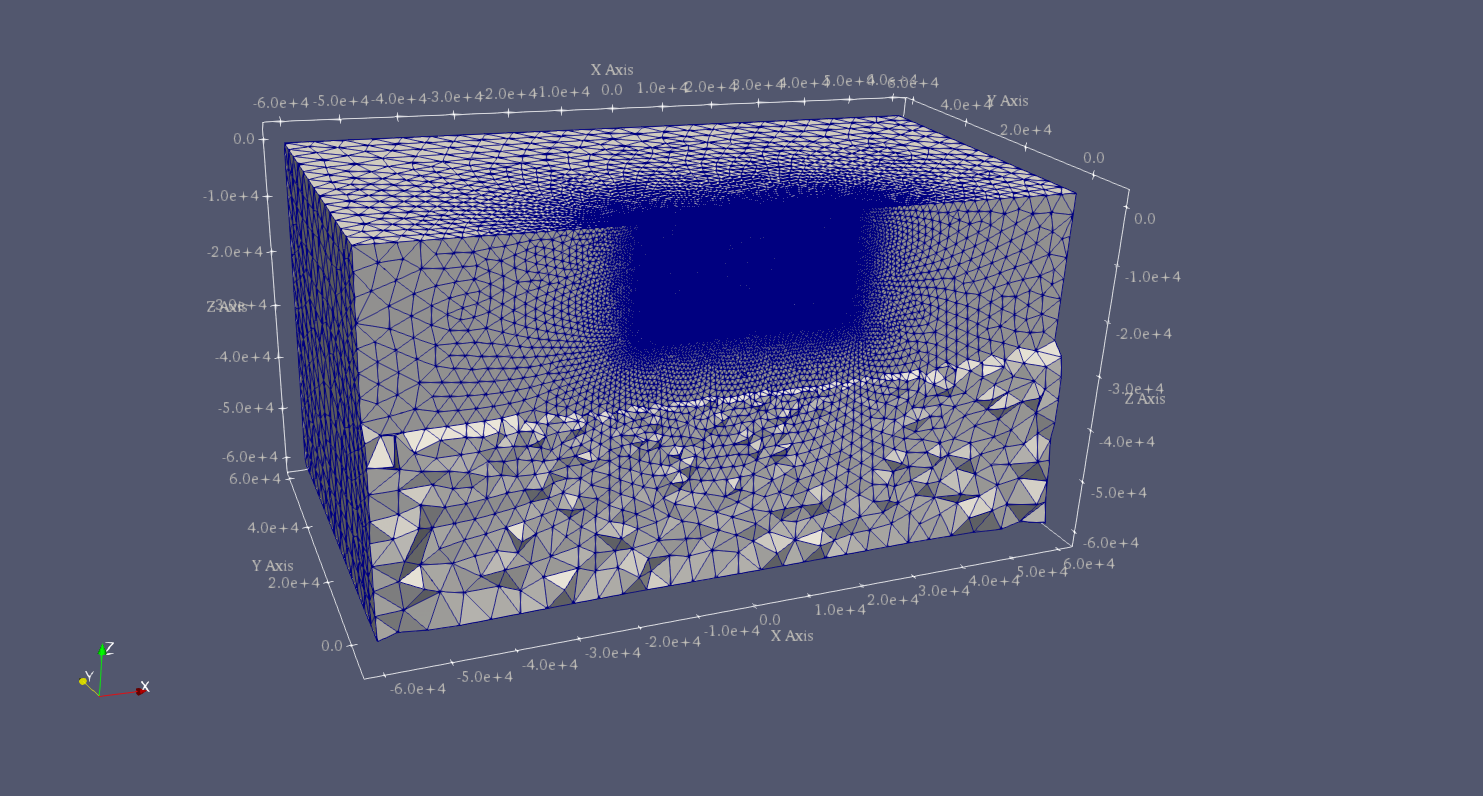
Diagram shows the tetrahedral meshing of TPV 104 shown in the ParaView panel.
Results
The earthquake nucleates in the velocity-weakening zone spontaneously. The rupture propagates through the transition zone into the velocity-strengthening region, where it smoothly and spontaneously arrests. Nucleation is done by imposing additional shear stress in a circular patch surrounding the hypocenter.
Figure [fig:tpv104sr] shows the slip rate on the fault along the downdip direction at T=5s.
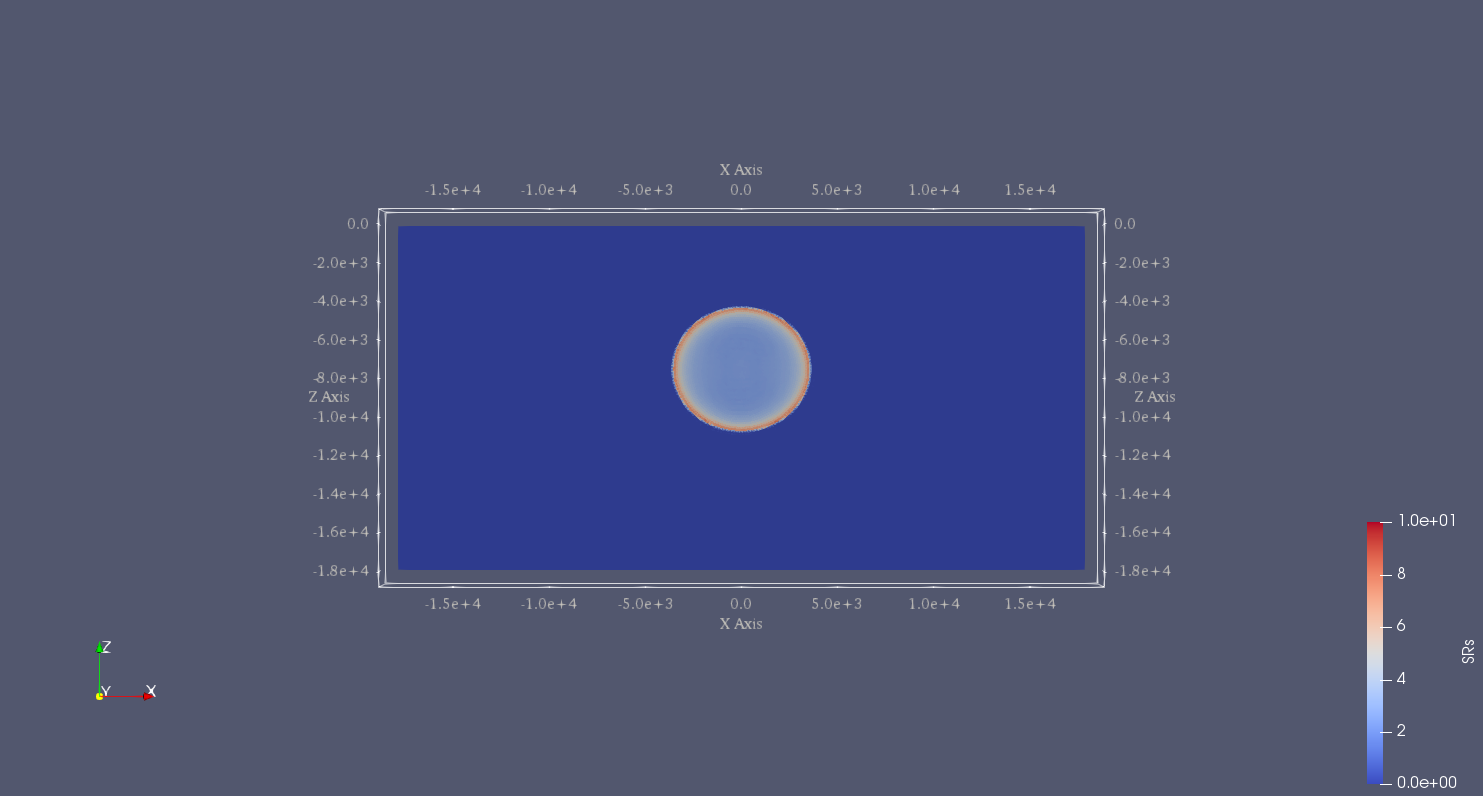
Slip rate along-strike on the fault at 2 s of TPV104.
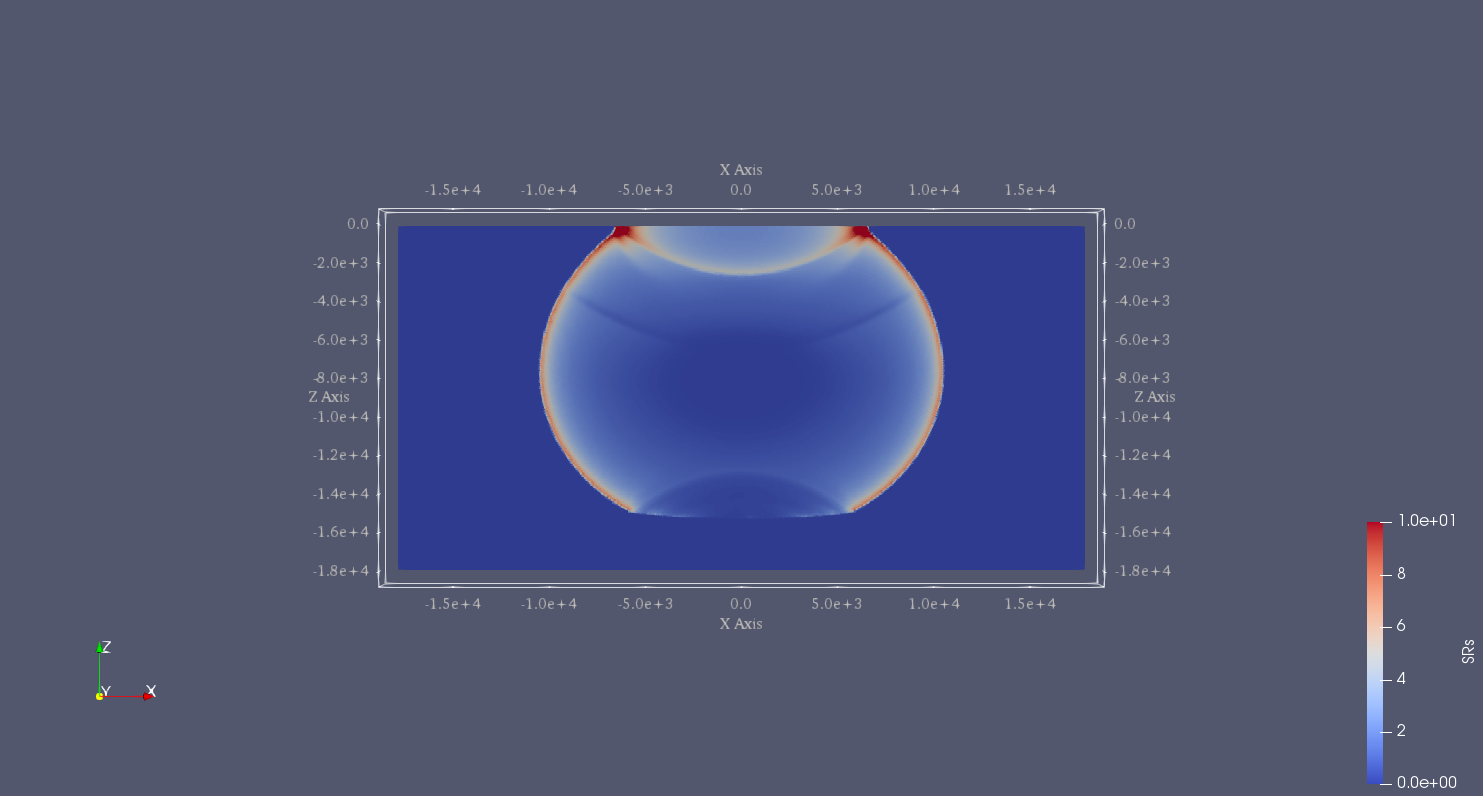
Slip rate along-strike on the fault at 5 s of TPV 104.